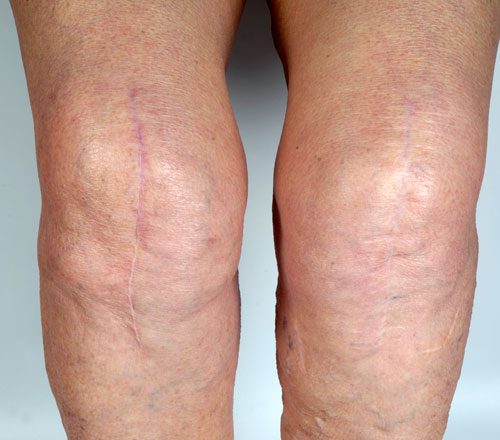What is a Scar?
A scar is a mark left on the skin by the healing of injured or damaged tissue. Scars can be disfiguring, can cause unnecessary unhappiness, and contribute to low self-esteem and self-confidence.
Reducing the Appearance of Scars
Scars can be raised (hypertrophic) or sunken (atrophic), pigmented – brown, white or red, and numb or painful. Scars can result from various causes, including surgery, traumatic accidents, or medical conditions such as acne. The degree of scarring depends on many factors and is highly individual.
In some cases, the appearance of scars can improve with time, particularly when they occur in younger individuals and children. Unfortunately, in many cases, significant scarring can remain permanent, causing stress, frustration, discouragement and, in some cases, constant discomfort and pain for the patient. With modern technology and advances in medical understanding of the scarring process, most scars can be dramatically improved cosmetically and functionally.
Scars are complicated reactions of damaged tissue, requiring advanced training and skill to treat them effectively. A dermatologist can assess your scar/scarring condition, recommend the appropriate treatment for your particular presentation, and ensure that the treatment is administered correctly.

Treatments for scarring include:
- Laser therapies
- Surgical excision and subcision techniques
- Peeling procedures
- Injections with medicines such as cortisone and 5FU
- Microneedling
- Topical treatments
The choice of treatment for your scar will depend on several factors, including but not limited to the following:
- The type and degree of scarring
- Duration and location of the scar
- The patient’s skin type and colour
- The cause of the scar
The majority of scars are treated with a combination of several different treatment modalities to achieve the most dramatic and long-lasting results.
Various laser treatments can vastly improve the appearance of most scars. In fact, laser scar treatment, in some capacity, is currently one of the most effective ways to improve or remove scars in the majority of cases. At Art of SKIN Dermatology, Laser and Cosmetic Surgery, we commonly use a combination of the Elite MPX Nd:YAG 1064 laser and Elite IPL, the Cynergy PDL and Nd:YAG 1064, the Palomar Icon IPL, and the SmartSkin Co2 for scar reduction/improvement.
In some cases, surgical excision of the damaged tissue or scar with reattachment of the skin provides the most acceptable scar revision results. This may or may not be used with subcision, a procedure where the hardened scar tissue beneath or within the skin is mechanically broken up or released with a surgical instrument.
Punch grafting is a useful surgical procedure where damaged, scarred tissue is surgically removed using a small circular scalpel device called a punch. The resulting small hole in the skin is then filled with healthy skin grafted from a nearby site.
Superficial and mid-depth skin scarring can also be effectively improved using some peeling procedures. We use TCA chemical peels in patients with widespread, superficial facial scarring (often resulting from acne). Chemical peels can also be very effective on the neck, chest, shoulders and back – areas where laser resurfacing for scarring can be problematic.
You don’t have to be bothered by unwanted, embarrassing or painful scars. Call Art of SKIN Dermatology, Laser and Cosmetic Surgery for a complimentary consultation. We will assess your skin type and suitability for scar treatment during your consultation. We will also discuss your options and develop the most appropriate, safest, and most effective scar treatment strategy while carefully considering your scar concern, schedule, treatment objectives and budget.
